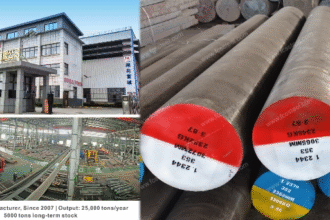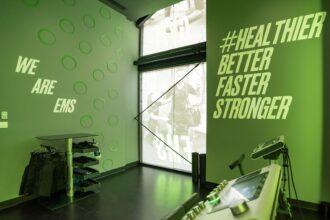If you manage a busy site, you don’t want ladders wobbling in walkways or scaffold towers clogging corridors. For fast, tidy, indoor work at height, an electric personnel lift is often the safest, cleanest, and most cost-effective option.
TL;DR (for busy teams)
- Zero emissions, low noise — perfect for occupied buildings.
- Compact footprint fits standard doors, lifts, and tight aisles.
- Fast setup: drive in, elevate, get it done.
- Non-marking tyres and leak-free electric power protect floors.
- Consistent safety: guardrails, interlocks, tilt sensors.
- Best for planned maintenance, call-outs, inspections, signage, M&E.
The Problem These Lifts Actually Solve
Indoor maintenance is about speed without disruption. You need height access that:
- Rolls through a single doorway without dismantling anything
- Doesn’t smell, drip, or scream over background noise
- Keeps public areas open and floor finishes unscathed
- Starts work in minutes, not hours
Electric personnel lifts tick each box.
Key Benefits (in plain English)
1) Clean and quiet
Battery-electric power means no fumes and low dB operation. That’s essential in retail, healthcare, airports, schools, and offices where people are present.
2) Small but mighty
Many units fit through standard doorways and turn inside narrow aisles. Expect working heights from 5–14 metres (model dependent) with smooth proportional controls for precise positioning.
3) Floors and finishes stay safe
Non-marking tyres and electric drive help protect vinyl, resin, hardwood, and polished concrete. No messy fluids, fewer slip risks, and much less cleaning after the job.
4) Faster than scaffold, safer than ladders
With a built-in platform and guardrails, you get hands-free working, a stable base, and repeatable safety on every task — without erecting towers or balancing on rungs.
5) Lower total job time
From arriving on site to the first task can be under five minutes: position, isolate, elevate. That time saving stacks up over multi-point maintenance routes.
When an Electric Personnel Lift Is the Right Choice
Use one when you need to:
- Change lighting (LED swaps, emergency lighting checks)
- Run M&E tasks (sensors, ducting clips, trace and label)
- Inspect & repair ceilings, sprinklers, HVAC, signage
- Stock picking & inventory in clean warehouse zones
- Reactive call-outs in public areas where speed matters
When You Might Pick Something Else
- Heavy-duty ducting or pallet loads? Consider a scissor lift with higher platform capacity.
- Outdoor or rough ground? Choose a diesel or hybrid boom with all-terrain tyres.
- Very high outreach? A boom lift may be better for “up and over” obstacles.
Safety That Comes Built-In
Modern electric personnel lifts typically include:
- Guardrails and self-closing gates
- Tilt sensors and interlocks that won’t let you elevate unsafely
- Emergency lowers and ground controls
- Keyed isolation so only trained users operate
- Non-marking tyres and smooth electric drive to protect floors
Operator basics: trained user, pre-use checks, harness policy per site rules, clear exclusion zone, banksman where needed.
Spec & Site-Readiness Checklist (copy for your RAMS)
Access & space
- Door width/height (mm)
- Lift car dimensions (if using passenger lift)
- Aisle width and turning radius
- Floor loading limits (kPa or kN/m²) near atriums/voids
Task & height
- Max working height (m) and actual task height (m)
- Platform capacity required (people + tools, kg)
- Duty cycle: number of stops/tasks per hour
Power & runtime
- Battery state on delivery; charger location and socket type
- Charge window (overnight/quiet hours)
- If using multiple floors, plan a mid-shift top-up
People & protection
- Trained operators listed
- PPE (hard hat/chin strap, boots, gloves)
- Exclusion zone marking (cones/barriers)
- Spotter/banksman where public pass through
Housekeeping
- Floor protection needs (if finishes are delicate)
- Work at height permit logged
- End-of-shift wipe-down and charge on return
Cost & Downtime: The Real Maths
- Setup time drops from 30–60 minutes (tower) to a few minutes.
- Repeatability: same safe platform at every location; fewer resets.
- Less rework: stable platform = better workmanship first time.
- Lower disruption: quiet running means fewer out-of-hours premiums.
FAQs (snippet-friendly)
What’s the typical working height?
Common indoor personnel lifts cover 5–14 m working height. Pick the smallest that safely reaches your task.
Do they mark floors?
Most use non-marking tyres and electric drive, so they’re suitable for finished floors. Always confirm surface limits.
How long do the batteries last?
A full charge often covers a standard shift with intermittent elevation. Plan for overnight charging or quick top-ups between tasks.
Can they go in passenger lifts?
Many compact models fit standard lift cars; check machine dimensions and weight against the lift’s rating.
Do I still need training?
Yes. Only trained operators should use powered access. Complete pre-use checks and follow your site’s work-at-height rules.
Why teams like yours choose electric personnel lifts
- Less fuss for facilities and security
- Better experience for staff, patients, visitors or shoppers
- Safer, more consistent work at height
- Speed that pays for itself over a week of call-outs
Ready to spec the right unit?
Tell us your task height, access photos, floor limits and schedule. We’ll match a compact electric personnel lift that rolls straight through your doors, protects your floors, and lets your team finish on time without the drama.
Meta (for CMS)
- Primary keyword: electric personnel lift
- Secondary keywords: indoor maintenance, non-marking tyres, compact lift, zero-emission access
- Search intent: evaluation & selection for indoor maintenance
- Optimised for: AEO (FAQs, TL;DR), featured snippets (concise answers), scannability (clear headings, bullets)
- Region & spelling: UK / British English

















